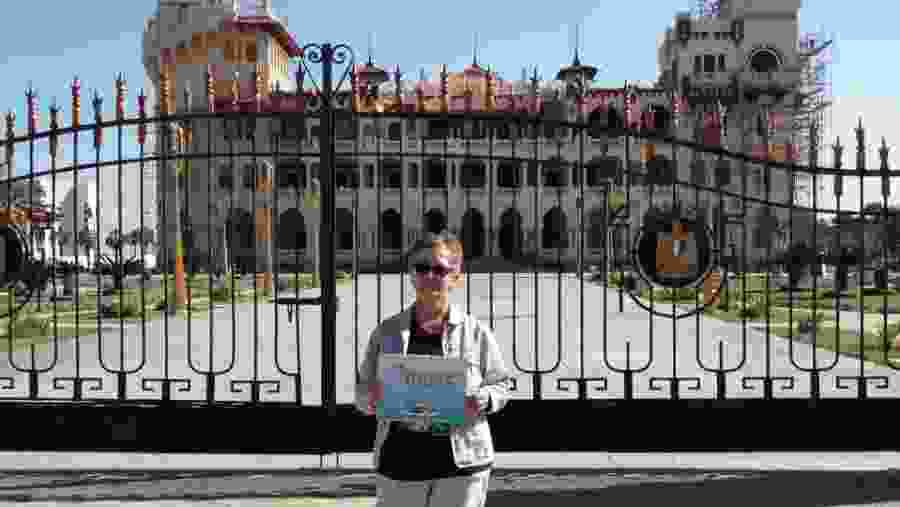8-Hour Tour to Alexandria from Alexandria
Highlights
Alexandria
archaeological, historical, museums
Private Tour
8 Hours
Easy
English
Description
Enjoy a day tour in Alexandria, exploring the historical attractions of the beautiful city by the Mediterranean Sea and learn about the historical sites from your Egyptologist tour guide. Visit Pompey’s Pillar, Catacombs, and Qaitbay Citadel, which was built on the site of the ancient pharaohs of Alexandria. Go to the beautiful reincarnation of the famed ancient library of Alexandria. Drive to the Roman amphitheatre, Unknown Soldier of Alexandria, and Monatazah Palace.
Itinerary
-
Alexandria Tour from Alexandria
- A tour representative will pick you up from your hotel in Alexandria.
- Transfer to discover the catacombs of Kom El Shofaqa, also known as the hill of treasure, regarded as a huge necropolis and royal cemetery that dates back to the second century A.D. The necropolis has a unique mixture of Roman, Hellenistic and pharaonic art elements reflected in the paintings on the wall and the style of the statues, funeral objects and tombs. The archaeological site was one of the seven wonders of the middle ages.
- Then move to one of the remarkable structures built during the reign of Emperor Diocletian in Egypt - Pompey's pillar. The column is now standing in the heart of Alexandria on top of a temple ruin built during the Ptolemaic kingdom in 297 AD. The pillar's base diameter is 2.71 meters and was carved out of red granite from Aswan city. The net weight of the pillar is 285 tons and reaches 26 meters high with the base. The prime sight was built to commemorate the victory of Emperor Diocletian over an Alexandrian revolt.
- Then move to the Roman theatre. We see today at Alexandria city is a typical form of Roman theatre, consisting of an audience section made of marble, granite columns, five compartments and based on thick limestone walls. The theatre used to host huge ceremonies and events with a capacity of 600 spectators. The audience section consisted of 13 rows made of white marble, and the supporting columns were made of granite exported from Aswan city, south Egypt. The five compartments on the top of the audience section probably were used to host royals or public figures during performances and were covered by ceilings in the shape of domes supported by granite columns to protect the audience from the sun and rain. In the 6th century A.D., an earthquake hit Alexandria, and it destroyed most of these structures, leaving only some ruins that still stand today, reflecting the Romans' beautiful architectural skills.
- Move to the square-shaped castle with a 150-meter area surrounded by the middle sea from each side; the first floor contains a mosque and defence hall that allow soldiers to pass quickly and defend the walls during wars. The second floor contains chambers and halls, while the third floor consists of a vast throne chamber where the Qaitbay sultan watched the sailing ships towards Alexandria shores. It also has an oven for making wheat bread for the soldiers living in the citadel.
- Lighthouse of Alexandria: It is replaced by the citadel. The lighthouse's height is almost 150 meters, it was dedicated to Poseidon, the god of the sea known to the Greeks, and it was decorated with marble statues. The lighthouse was considered one of the seven wonders of the ancient world, mainly was designed to guide mariners and sailors, but unfortunately was destroyed by an earthquake in 1477 Qaitbay sultan built his military castle on the ruins of the old lighthouse, and some said that the citadel was built from the lighthouse left ruined stones.
- Then, move to Bibliotheca Alexandrina, the Alexandria library, which presented knowledge for over 600 years until it was burned in the third century. It had a religious purpose for once. It was mainly designed as a temple that held many rare manuscripts. The new library of Alexandria renovation was in 2002 coasted about 200 million $, designed by a Norwegian architect.
- Then, move to the extensive Montaza Palace grounds first had the Salamlek Palace, built in 1892 by Khedive Abbas II, the larger Al-Haramlik Palace and Salamlek Palace.
- Visit the Stanley Bridge: the Stanley Bridge, or the Stanley Bridge, as it is known in Egypt, is a bridge built to improve traffic flow on the Alexandria Corniche.
- See the Monument to the Unknown Marine Soldier in the Mansheya area of Alexandria. It was built by the Italian community in Alexandria in 1933 AD to honour Khedive Ismail, and she made a statue for him in the middle of the top of the Monument. Then it was turned into the Monument of the Unknown Soldier in 1965 AD, and the statue of Khedive Ismail was removed from the Monument.
What's Included
What's Excluded
Know Before You Go
What To Bring
Meeting Point
Cancellation Policy
-
For cancellations upto 2 days before the tour -
Refund of 80% of the tour price.
Price
| Adult | |
|---|---|
| 11 to 15 | /person |
| 7 to 10 | /person |
| 4 to 6 | /person |
| 2 to 3 | /person |
| 1 to 1 | /person |
| Child | |
| 1 to 1 | /person |
| Child | |
| 1 to 1 | /person |
|
This is a private tour |
|





